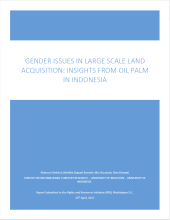Land Library
Welcome to the Land Portal Library. Explore our vast collection of open-access resources (over 74,000) including reports, journal articles, research papers, peer-reviewed publications, legal documents, videos and much more.
/ library resources
Showing items 1 through 9 of 123.Despite an inflow of investment in rural communities, there are concerns about negative impacts on local people’s livelihoods, access to farming land, productivity, income levels, food security and access to social services.
The impacts of large-scale agricultural investments on rural communities’ land ownership, food security, productivity, income, and access to education and health differ within and between communities depending on business and government influence.
This report outlines administrative ways to harmonise state and traditional institutions in terms of land justice in Uganda. Customary justice within the traditional clan system in Uganda offers big advantages over the state judicial system in terms of physical access and costs.
This publication is based on a range of past studies on ICCAs conducted in several regions of the world in the last two decades, and, most recently, on 19 country level case studies.
The oil palm boom in Indonesia continues to be a major driver of land acquisitions in remaining tropical forest frontiers, drawing on a wide range of actors into its production, and transforming both rural landscapes and livelihoods in the process.
The study tried to assess the state of data in India, particularly to track and report two critical land governance indicators viz. women land rights and forest rights, critical to ensure equity and sustainability in terms of public policy.
This paper was presented at the “2017 WORLD BANK CONFERENCE ON LAND AND POVERTY”, The World Bank - Washington DC. This paper provides a comparative appreciation of all the datasets especially the metadata and methodology along with a SWOT vis-à-vis reporting requirement of SDG indicator.
India registered rapid economic growth over the past couple of years, with the GDP growing 7.6 percent in 2015-2016. While economic activity remains buoyant, however, the country still has a long way to go.




